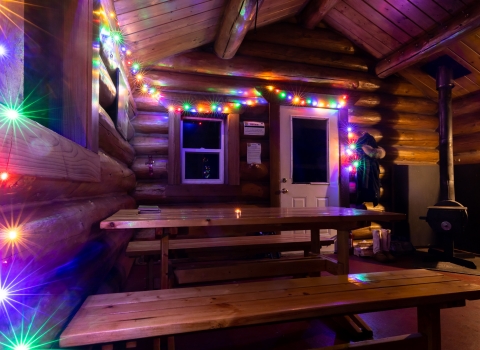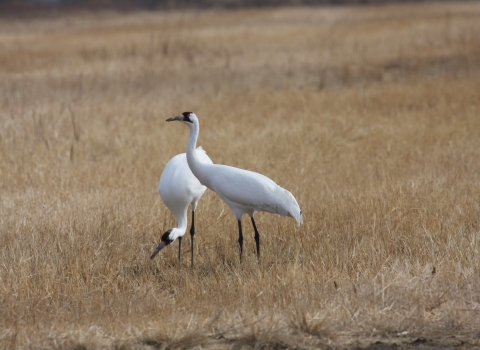In Vermont’s Nulhegan Basin, thick stands of spruce and fir trees stretch as far as the eye can see.
The trees are at the center of the last two centuries of natural history in this northeast corner of Vermont — and now they’re shaping its future.
Through the 19th and 20th centuries, foresters were hard at work harvesting trees in the basin. The lumber industry was booming.
During this time, without roads or vehicles to move the logs, workers piled up millions of logs along tributaries, or streams that flow into larger bodies of water. It was hard work that paid off — when the snow melted in spring, workers opened the dams, and the logs would float downriver as their way of transportation. To make the log drives work, they reshaped the Nulhegan River and its tributaries to prevent log jams.
While this fueled economic growth, it left scars that still affect the Nulhegan Basin today. The Silvio O. Conte National Fish and Wildlife Refuge’s Nulhegan Basin Division partnered with Trout Unlimited and Vermont Fish and Wildlife to restore the biodiversity of the river and its tributaries.
Because reshaping came at a steep price. Without trees lining the river, water temperatures increased and the banks eroded. Flows washed sediment out to larger bodies of water. Dams blocked fish from moving to important areas for their life cycles. Future logging roads used culverts that prevented fish and other aquatic wildlife from moving through. Since these log drives, brook trout populations declined due to the impacts to their habitat.
Field teams strategically cut and placed trees in headwater streams with limited sediment build up — often in remote, difficult-to-reach areas. The trees serve as a structural catch that simultaneously allows the flow of water and the collection of sediment, making the river more suitable for migratory fish.
“Sediment builds up, which causes the streams to be narrower, deeper and colder, and thereby holding more fish,” said Nulhegan Basin Division manager Steve Agius. “You’re allowing the streams to have more natural influences.”
Ten miles of streams have been restored on the refuge, and closer to 20 miles have been restored across the watershed.
“The added wood stores sediments higher in the watershed and slows runoff during heavy rain and snow melt events,” said Vermont Fish and Wildlife Department fisheries biologist Jud Kratzer. “This reaffirms the value of natural streamside vegetation, which can naturally provide large woody material to Vermont’s streams.”
There is strong evidence that this project is working. Within a three-year period of consistent strategic tree placement, there has been a whopping 150 percent increase in brook trout abundance and size in areas of the chop and drop.
“These restored stream reaches provide excellent cold-water refuge during the warm summer months as well as recreate ideal fall brook trout spawning opportunities,” said Trout Unlimited’s New England project coordinator Colin Lawson. “Post-restoration monitoring has demonstrated that over 85 percent of installed large wood structures remain intact through the years, continuing to provide excellent habitat across the watershed.”
The wood structures benefit other wildlife, too. Like the wood turtle, a species at risk of steep declines. The areas of forest that line the river are critical for wood turtles to nest and raise young. Improving the health of streams and surrounding land allows a wide variety of wildlife to thrive.
While the chop and drop project has helped brook trout make a comeback, there are still undersized culverts in the basin impeding fish migration. The Nulhegan River is part of the Connecticut River watershed, which encompasses four states: Vermont, New Hampshire, Massachusetts and Connecticut. Coordinating with other state agencies to improve the health of the basin is a significant challenge. To combat this, state agencies and conservation organizations have removed dams no longer in use and replaced undersized culverts. Their efforts have chipped away at the seemingly monumental task of improving pathways for fish migration.
Every stream obstacle that gets removed has the potential to restore access for fish and other wildlife.
“It’s a huge job but we are making headway,” said Agius. “It’s the accumulation of all of these projects that gets us to success.”
The Chop and Drop project highlights the value of persistence in conservation and proves a difference can be made. One tree at a time.






